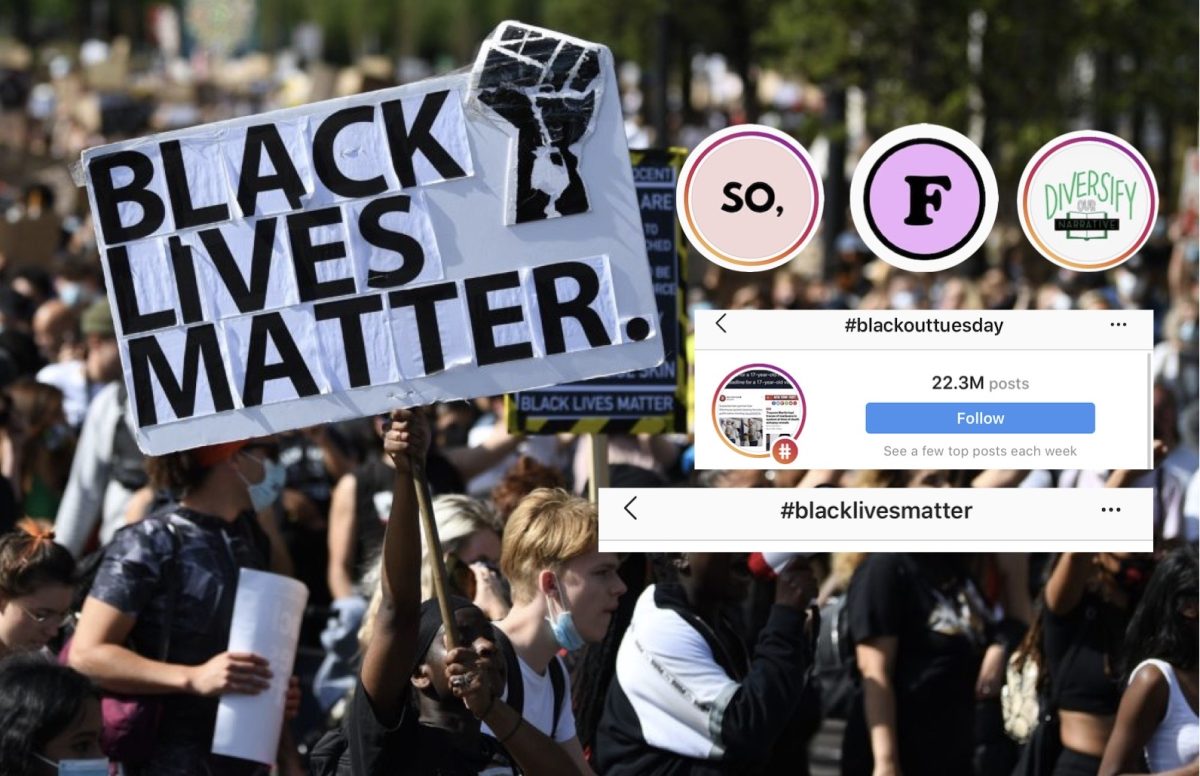When “activism” was first added to the dictionary in 1910, the prospect of promoting social justice with a cell phone and reaching individuals across the globe was unthinkable. However, like almost everything nowadays, activism has adapted to the virtual world. This shift raises a new set of questions on the effectiveness of online activism in propelling social justice movements.
Social media is often best used as a medium for expanding the reaches of local initiatives. At The School Without Walls in Washington D.C, seniors Seamus O’Brien and Giulio Lacoviello created an Instagram account, @hs4dcstatehood, to further their work in advocating for DC statehood.
“Instagram allowed us to bring in members from all around D.C. and run interest meetings at other schools,” O’Brien said.
The account, which has amassed over 1,200 followers, became especially useful during the COVID-19 pandemic because O’Brien and Lacoviello were able to continue hosting virtual meetings on Zoom, which would have been impossible without a social media presence.
The extension of local initiatives into the social media world is becoming increasingly present on a larger scale. Museums like the United States Holocaust Memorial Museum (USHMM), have created online content that engages audiences who may never be able to physically visit the museum.
“We reach more people on a daily basis through social media than we can any other platform in the museum. So, we have millions of visitors attending the museum annually, but also millions of followers seeing our content every single day,” Social Media Content Specialist for the museum Hannah Meyer said.
With content shifting into an online sphere, the audiences activists can reach online are no longer limited by regional boundaries.
“I have a lot of international friends who I know don’t really know about this topic because it’s a different culture where we come from. So I think [social media] is a really important tool for reaching those people,” WIS Senior Iris Cooper said.
However, Meyer, O’Brien, Lacoviello, and Cooper all warned against the potential dangers of social media as a forum for political discourse and activism.
“Some people use [social media activism] as a way to clear guilt. When there is an issue in the world and they feel guilty, they sometimes use social media and feel like they have done enough.” Social media can be super helpful, but only in addition to in person activism,” Lacoviello explained.

The graph above depicts the Google search trends for “Black Lives Matter” over time. In response to the murder of George Floyd by Minneapolis police officer Derek Chauvin on May 25, nationwide protests ensued, and the searches for Black Lives Matter (BLM) dramatically increased. However, the searches quickly fell as the movement receeded out of the public eye.
During this peak period, over 12 million Instagram users shared black squares in solidarity with the movement on July 7, in a day dubbed Black Out Tuesday. However, the Justice for George Floyd petition had nine million signatures, indicating a significant portion of those sharing online did not extend their efforts to non-social spaces. This discrepancy is a reflection of performative activism: when the motivations behind sharing activist content online are more out of social pressure than a genuine desire for change.
“A lot of people feel pressured by others in order to post. So instead of finding a cause that they really believe in and pursuing that, instead they feel pressure to back something up that they don’t really understand,” WIS Junior Alexander Danielyan said.
However, despite, the dangers of performative activism, and the quick turnaround of public interest, significant changes took place, in part due to an online outcry for justice in the weeks following the murder of George Floyd. Alongside the banning of police chokeholds in Minneapolis, and police budget reforms in New York and Los Angeles, the public approval rating for BLM has almost doubled from this time four years ago. According to a survey from Rasmussen Reports, 62% of U.S. voters are currently in favour of the movement, compared to 37% in 2016.
The online movement, coupled with massive protests in all 50 U.S. states, prompted WIS Senior Riley Contee and fellow leaders of WIS diversity clubs like the Black Student Union (BSU) and Student Diversity Leadership Club (SDLC) to “host a discussion series about social activism and what it means to be an ally.”“We really wanted to do this just because we don’t normally talk about social activism and police brutality on a wide scale at our school,” Contee said. At WIS, and in many parts of the U.S., discussions about BLM that wouldn’t have happened without massive media attention, partially on social media, have been a part of propelling a large change in public opinion.
The choice to use Instagram and other online platforms for activism is, according to Cooper, “the least and most I can do right now.”“We discredit how much we could use social media, and because it’s one of the tools we use all the time we should use it for good, not just to validate ourselves,” she said.
By Beka Tatham

































































